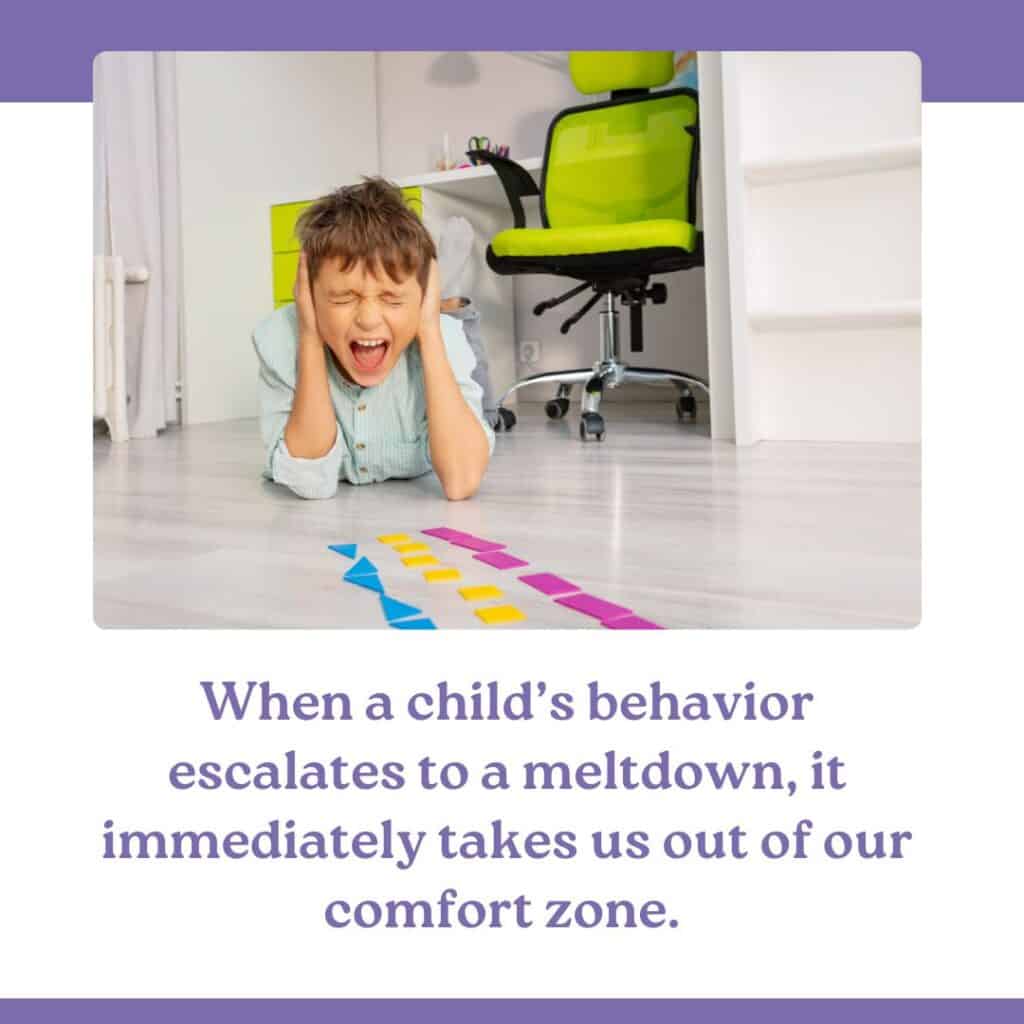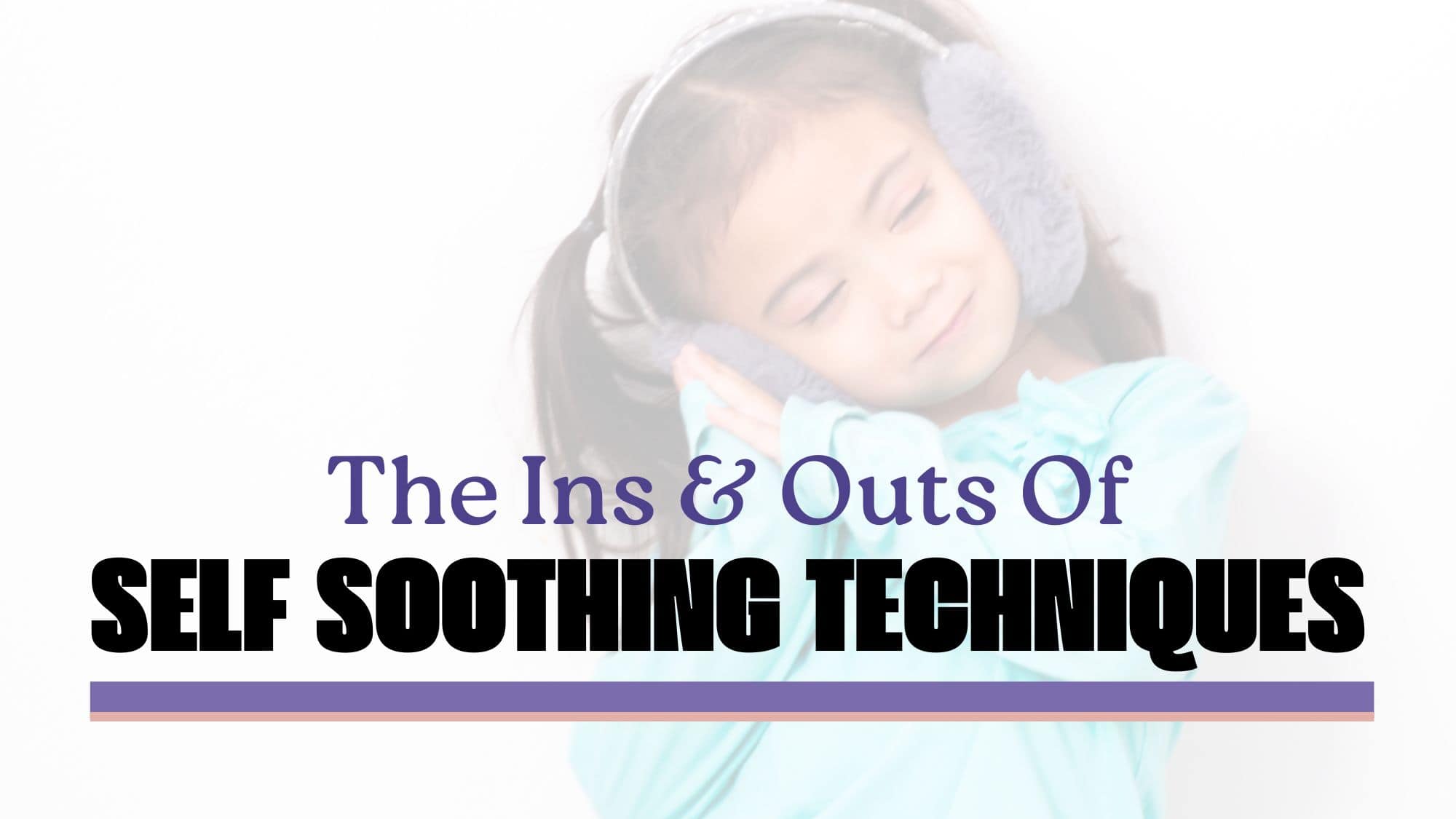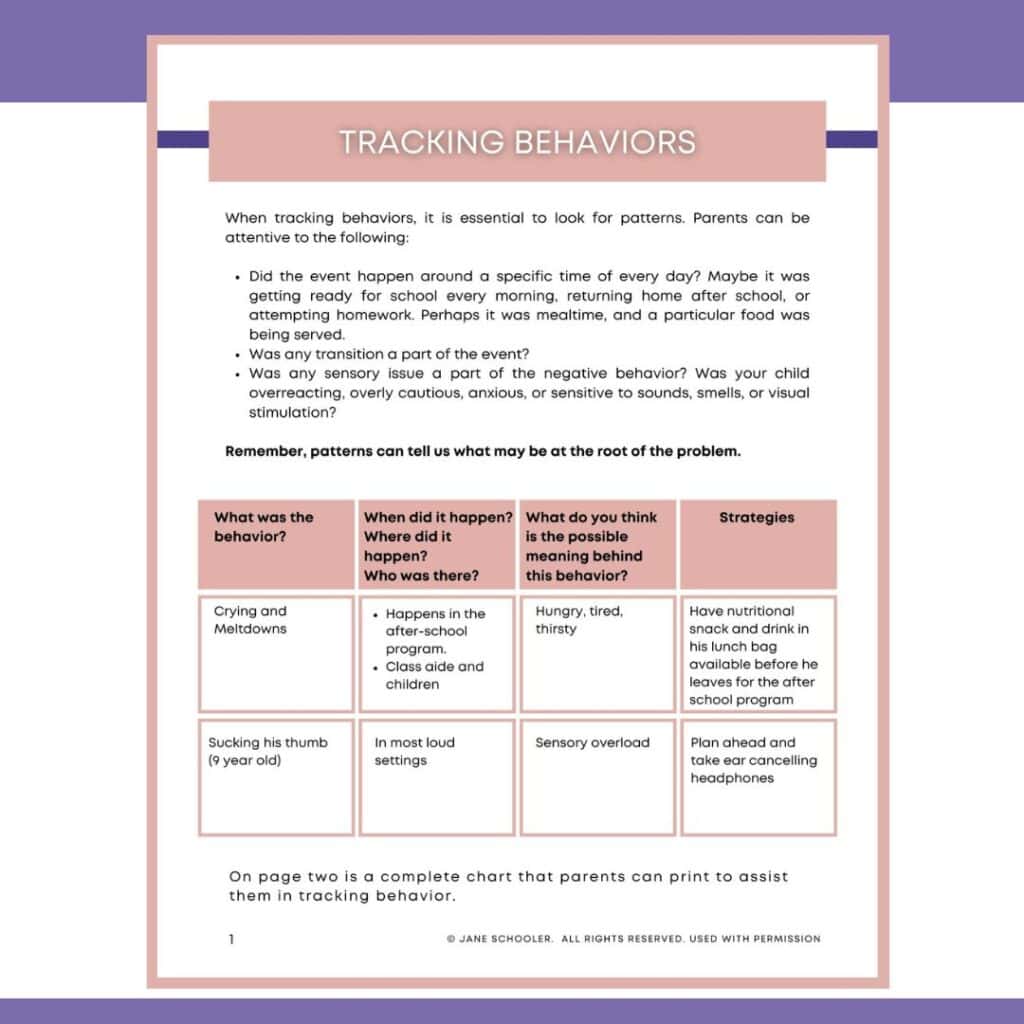Three-year-old Jake walked into the garage where his foster dad worked on a wood project. The loud sounds of sounds and hammering filled the garage. Almost immediately, Jake became agitated, putting his little hands over his ears. Jake noticed an old pair of earmuffs on the workbench, walked over to them, reached up, and put them on. Within a few moments, unknowingly practicing a self-soothing technique, he went from stressed to calm.
Rick was astounded at the difference and allowed Jake to “play” with the earmuffs all day. Later that day, when Rick took Jake to get his own set of earmuffs, Jake’s behavior around the house improved as well.
Rick and his wife, Anna, were new foster parents and knew little about sensory issues. They only saw behaviors that frustrated them. Within a few weeks, their caseworker arranged for an occupational therapist to come to the home weekly to work with Jake and his foster parents. As they learned more about self-soothing techniques and self-regulation, their parenting of this precious young fellow changed. They knew what they needed to do and why. They still had a lot of questions, one being, “What is the difference between self-soothing and self-regulation?”
Self-Regulation

Erin Arant, a licensed occupational therapist and mother of three, two by adoption with traumatic histories, describes the difference between self-soothing and self-regulation. “In my opinion, self-soothing is a more primal way to de-escalate from an already escalated state. Self-regulation is something that can be learned to help avoid escalation in the first place.”
“I like to think of an infant as a good example of self-soothing behavior that comes naturally to them,” says Brianna Robbins, an occupational therapist student and sister to three adopted children, one with sensory issues. “When an infant is left alone, they cry a little bit, but soon the self-soothing behavior kicks in. An infant may suck his thumb or reach for a plush toy or blanket to hold. It is not a behavior he has been taught but has learned to do independently. It regulates behavior because it is soothing.”
Of course, babies engage in some self-soothing techniques like thumb-sucking and twirling their hair when stressed. However, toddlers need adequate developmental support if they do not develop advanced self-soothing skills independently. Without it, which is the case for many foster and adopted children, maladaptive self-soothing methods may develop, which can lead to later problematic behavior, such as oppositional behavior (children) or alcoholism (adults). Severe anxiety disorder in childhood can lead to panic disorder and other anxiety disorders in adulthood.[1]
Maladaptive Self-Soothing Behaviors
What negative self-soothing techniques can children develop without the nurturing support of caring adults? We often think of the behaviors listed below as toddler behaviors. It is important to remember that many of our children are developmentally behind, even as much as one-half their chronological age. Because of this, a parent may see these behaviors occurring in older children.
Here are some examples of maladaptive self-soothing behaviors:
- Repetitive rocking in an older child
- Object sucking (e.g., clothing)
- Fingernail biting
- Object chewing (e.g. pencil)
- Cuticle picking
- Nose picking
- Hair pulling
- Head banging
- Throwing objects
- Grinding teeth
“When a child struggles with self-regulation or self-soothing behaviors, parents can react. It feels like a tantrum, or the youngster is extra fussy,” Brianna commented. “It’s not that he is initially trying to cause a disruption. He doesn’t know how to calm himself down.”
When parents deal constantly with these behaviors, it can lead to frustration and eventually emotional and physical disconnection from the child. Those behaviors can be like sandpaper grating against a parent’s attachment to the child. So what can parents do?
Practice Your Self-Regulation Skills
Staying calm in the moment is usually easier said than done. When a child’s behavior escalates to a meltdown (we typically think of this as a tantrum, but there is a difference), it immediately takes us out of our comfort zone. We react to the child’s behavior instead of responding to the child’s needs.
“Adults, or whoever is the caregiver in the situation, have to be calm,” recommends Erin. “If that means you take a second to calm yourself down before addressing the situation, that is what you need to do. You can also model that response in your stressful situations. It is a good time to model self-regulation by saying, ‘Hey buddy, I’m really upset right now. I’m going to take a minute to calm down, and we can come back in 5 minutes to reconnect.’ So, try and make sure to be level-headed before engaging with a dysregulated child.” There are several things that parents can do to help children manage unhealthy self-soothing behaviors.

Be Aware of Triggers
“It takes an attentive parent to understand the triggers that cause a reaction,” Erin continued. “At first, it will be trial and error.”
Attached to this article is a helpful tool titled Tracking Behaviors. First, pay attention to maladaptive self-soothing techniques like those listed above. “Be attentive to when behavior happens, what occurred beforehand, how much sleep your child had the night before, what your child may have eaten, etc.”
Erin mentioned another component to which to be attentive. “Pay attention to the people your child is around. You might notice a trend. For example, your kiddo might display maladaptive self-soothing responses whenever he comes in from playing with the same neighborhood child.”

Tools for Self-Soothing
“If I see any maladaptive behavior,” Erin says, “this tells me I need to enact a plan.” Here are some examples of what such a plan might involve, though there will always be some trial and error. Two of Erin’s favorites to use with her daughter and in her practice are the following:
Calm-Down Box
A calm-down box houses your child’s (or your) favorite items to help them self-regulate, regain a normal heart rate, and center themselves. Calm-down boxes focus on sensory exercises that can ground us by feeling, smelling, hearing, or practicing breathing [2]. To learn more about this helpful tool, click here. Erin mentioned that asking for her calm-down box is not unusual for her daughter. This tool can be created for everyone in the family.
Sensory Scavenger Hunt
If a child is connected enough and not too dysregulated, the sensory scavenger hunt is a tool a parent can use to help regulate their child. Erin does the following:
“I would say to my daughter, I see you are upset right now. Let’s play a sensory scavenger hunt.
- Can you tell me five things you see? Look around. (For example, a child might respond, ‘dog,’ ‘chair,’ ‘TV’, etc.)
- Can you tell me four things you hear?
- Can you tell me three things you can touch?
- Can you tell me two things you can taste?
- Can you tell me one thing you can smell?
For parents living with children who manifest several maladaptive self-soothing behaviors, giving them alternatives, such as those mentioned above, can be very helpful. There are many resources available that can be found by searching on the web.
For more information from Erin regarding sensory issues, self-soothing, and self-regulation, read this article’s attachment.
Erin Arant is a licensed occupational therapist and Trust-Based Relational Intervention (TBRI)® practitioner specializing in complex developmental trauma and sensory processing. She is based in Oregon.
Briana Robbins is a 2nd-year Occupational Therapy doctoral student at Kettering College in Ohio.

















